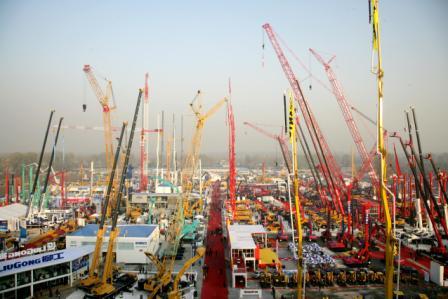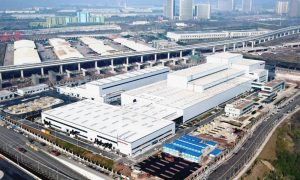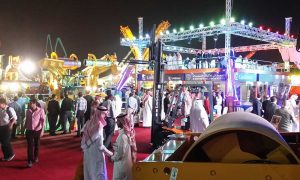The road from China
Construction Machinery Middle East continues its preview of 2012 with a look at a critical year for the Chinese machinery industry.

Construction Machinery Middle East continues its preview of 2012 with a look at a critical year for the Chinese machinery industry.
It was a conversation that could have been repeated in a host of different places in 2011 but it was surprising to hear it coming from inside China.
“From April until now, the subcontractors on this road haven’t been paid any money. Right now, they owe our team at least $300,000,” Cui Jinmin, a man in charge of a crew of 15 workers on the $1.5 billion Shaanxi Province, told the visiting AP journalist. “There’s nothing we can do. The road’s owner [the local government] has no money; we can only wait.”
Jinmin is one of thousands left stranded by the cancellation of infrastructure projects that were originally meant to help keep the economies going in China’s many provinces but are now massively in debt. The provinces are estimated to owe $1.5 trillion in loans intended to fund infrastructure building and the government has recently called back some loans to stop the debt running out of control.
Unsurprisingly this has been a chastening experience for the country’s construction machinery sector.
Speaking at China’s showcase machinery event in November, BICES, a spokesman for XCMG said the company was entering 2012 cautiously: “The beginning of last year was good for us, but since then the market has really slowed.”
The disappointment was palpable but understandable. For the first time companies such as XCMG, Zoomlion, Liugong, Shantui, Sany are facing the forces of economic realities. The government’s applying of the brakes on the economy hurt and suddenly there are too many machines and not enough work.
The excavator segment is particularly critical. It is among the most competitive markets in the world and companies have rushed in and pumped millions into capitalising on the versatile machine’s popularity.
Research and market analyst NPD estimates that in 2010 sales grew by 25% with Komatsu and Sany leading the way on the back of the infrastructure spending spree. However the threat of postponement to projects coupled with a saturated market is bad news.
“There’s just too many excavators,”complained an exasperated Zhan Chunxin, the chairman of Changsha Zoomlion Heavy Industry Science and Technology Development. “China is making too many excavators.”
Chunxin was speaking in June. Two months later the floor fell out of Europe’s economy spinning even the most robust of markets, China’s included, into disarray.
The CEO of Hitachi Construction Machinery, Japan’s second-largest heavy-equipment maker, is particularly pessimistic for the year ahead, predicting that Chinese demand for excavators will decline by as much as 30%.
Michijiro Kikawa said in an interview at the company’s headquarters in Tokyo: “I had expected Chinese demand to come back sooner,”
Zoomlion’s problem is a poignant one. It’s competing with big names such as Caterpillar – which remains committed to increasing its China excavator production by 400% by 2014 – and Komatsu in the excavator segment and an array of local manufacturers.
Not so long ago there was enough business for everyone to not make it a problem.
The reeling back of construction and machinery output has contributed to the country’s share of the global steel market falling by 4%, it’s still by far the biggest user of the material in world terms but in real terms that means it used 10% less steel than the year before.
Much of its domestic economic growth has been spurred on by the growth in home construction and ownership but that was recently described as imploding leaving real estate developers in disarray and creating a massive headache for the banks who were financing them. Moreover the Chinese government, which had been trying to curtail credit to slow its boiling inflation, abruptly changed course last month, reducing the amount of money banks must keep in reserve at the central bank for the first time since 2008. And of course, the foreign demand for Chinese exports has slowed as the global economy teetered.
The hard landing in China would have an immediate impact from Brazil to Russia, whose exports of steel, lumber and other commodities fed China’s construction boom. And it will slow the world economy, which relies on China as one of the only remaining engines of growth and high demand.
It’s been pretty hard on the Chinese machinery and heavy equipment industry too. Machines are more expensive to make in the country than ever before with the years of boom having had the downside of increasing the cost of the standard of living, labour and materials.
For the larger companies, that means looking to the few foreign markets (with the Middle East standing out) that are still relatively strong to take up the slack.
Companies like Zoomlion and Sany are desperate to raise funding to broaden their manufacturing footprint and take market share in markets that are not yet dominated by one of the big two of Caterpillar and Komatsu.
Two of those markets, Russia and Brazil, are likely to not perform as strongly as in recent years with China ordering less of their metals and raw materials. But many of the countries in the Middle East, despite their comparatively small size are likely to become increasingly important oases for Chinese machinery.
The good news, from their point of view, is that they are better equipped than at any other time to take on this region. The Chinese majors invested heavily in the region last year, expanding their sales presence and opening new parts and distribution centres to take on the perception that they are not interested in the customer beyond the initial sale.
While signing off $2 million in machinery sales at the recent Big5 event, a spokesman at Sany, the creator of the world’s biggest crawler crane, the SCC86000TM, said that the company was focusing on the Middle East region and putting “effort and energy” here, adding that the company is optimistic about construction activity in the region.
It is also hopeful that it can do business in the energy sector, particularly in the enticing Iraq market.
Sany has set itself the target of doubling the share of its overseas sales within the next five years. It’s a competitive target but it’s confident it is attainable with the market shifting its habits and perceptions changing on the ability of Chinese companies to fulfil promises on improved servicing.
“After the financial crisis there was of course a fall in construction activity in the region, but from this year we predict that the market will go up,” he added. “That’s why we’re putting so much effort and energy here. We will also be looking to grow the employee numbers as the business grows.”
Sany has also stepped up its presence at the region’s shows, and soon after the close of the Big5, the company was participating at an oil and gas exhibition in Basra, Iraq. Kevin added that the company sees the country of one of huge potential amid its wide government spending plans, as is the energy sector.
“We don’t have the majority of our work in oil and gas, though we certainly supply to that sector. We mainly still focus on construction, as well as mining,” said the spokesperson.
Setting up shop
Chinese companies are also stepping up their physical presence in the market. Bulldozer specialist (among a growing number of other things) Shantui opened a new facility in Jebel Ali Free Zone in July and officially launched its first Middle East subsidary, Shantui Construction Equipment FZE. Shantui’s managing director Wang Feng said the company will use the the facility as its main hub to serve the Middle East and North Africa markets: “This is an important step for us. We start with $1 million worth of stock. Eventually the stock will be increased to $20 million,” he said at the launch.
When LiuGong opened its first ever PDC in Jebel Ali, it made sure its top brass was there to host the inauguration. Zeng Guang’an, LiuGong’s president, noted the move is a continuation of LiuGong’s global expansion strategy and that Dubai is ideally situated in the Middle East.
“Dubai represents an important expansion for LiuGong,” Zeng said. “In the past three years, we have continued to sign major contracts, such as our sale of 45 refurbished machines in Saudi Arabia, which occurred in June. Our dealers there have been very successful in placing LiuGong in customer demonstrations and at job sites. The port at Jebel Ali and its free trade zone supports our imports, and allows us to ship machines and parts quickly into and out of the entire region.”
LiuGong already has four dealers in the region in Dubai, Yemen, Saudi Arabia and Oman moving 500 machines a year. Wheel loaders and excavators are its top sellers. LiuGong Machinery Middle East is expected to become fully operational in early 2012. It will include 1,000 square meters of office space for support personnel, and a parts depot. It represents a $3.5 million investment and the operation will be run by the approachable Liang Yongjie who will serve as the general manager. The subsidiary is well equipped too with a sophisticated parts depot that ensures that LiuGong to warehouse parts close to customers and markets. Parts and machines will be imported to the depot, tested and made available for customer demonstrations. LiuGong claims it can now ship parts to Dubai and across the Middle East within 48 hours.
Chinese machinery manufacturers have come a long way since they started looking at the Middle East.

























